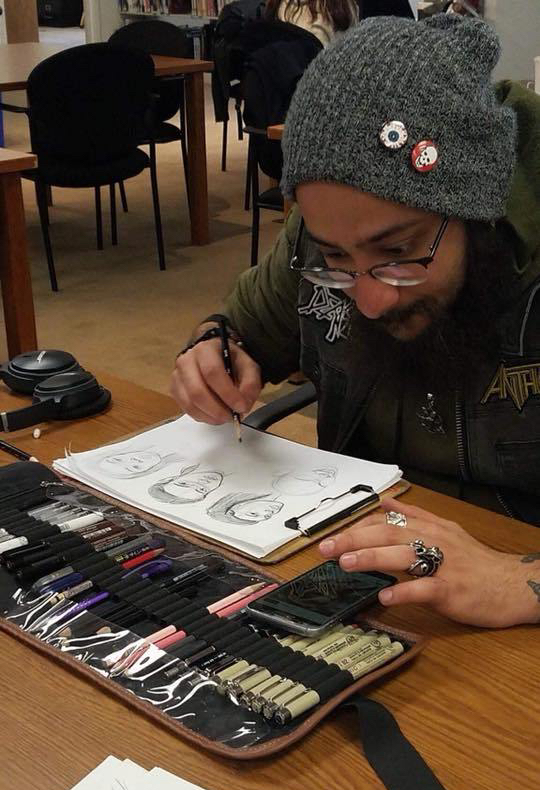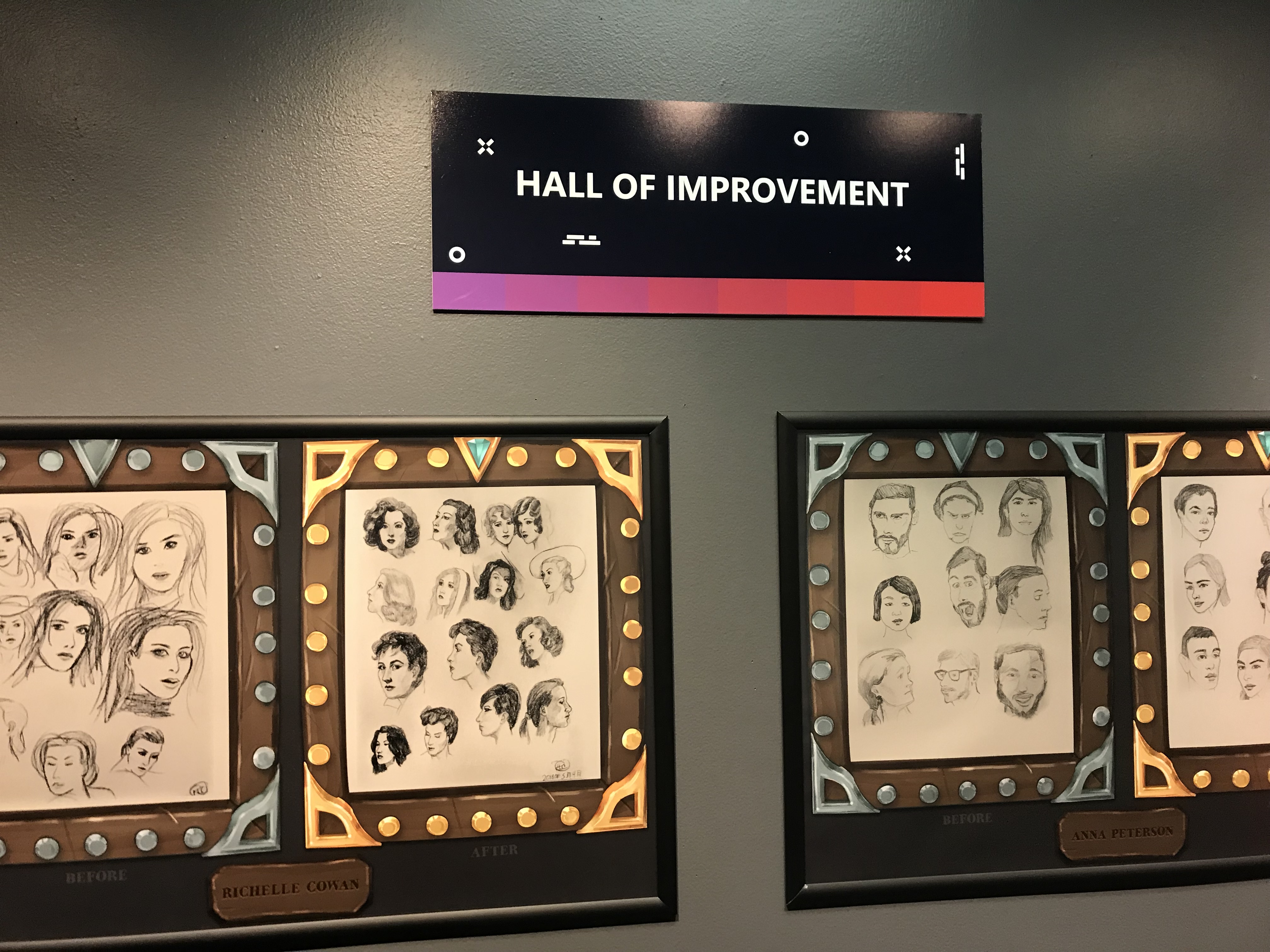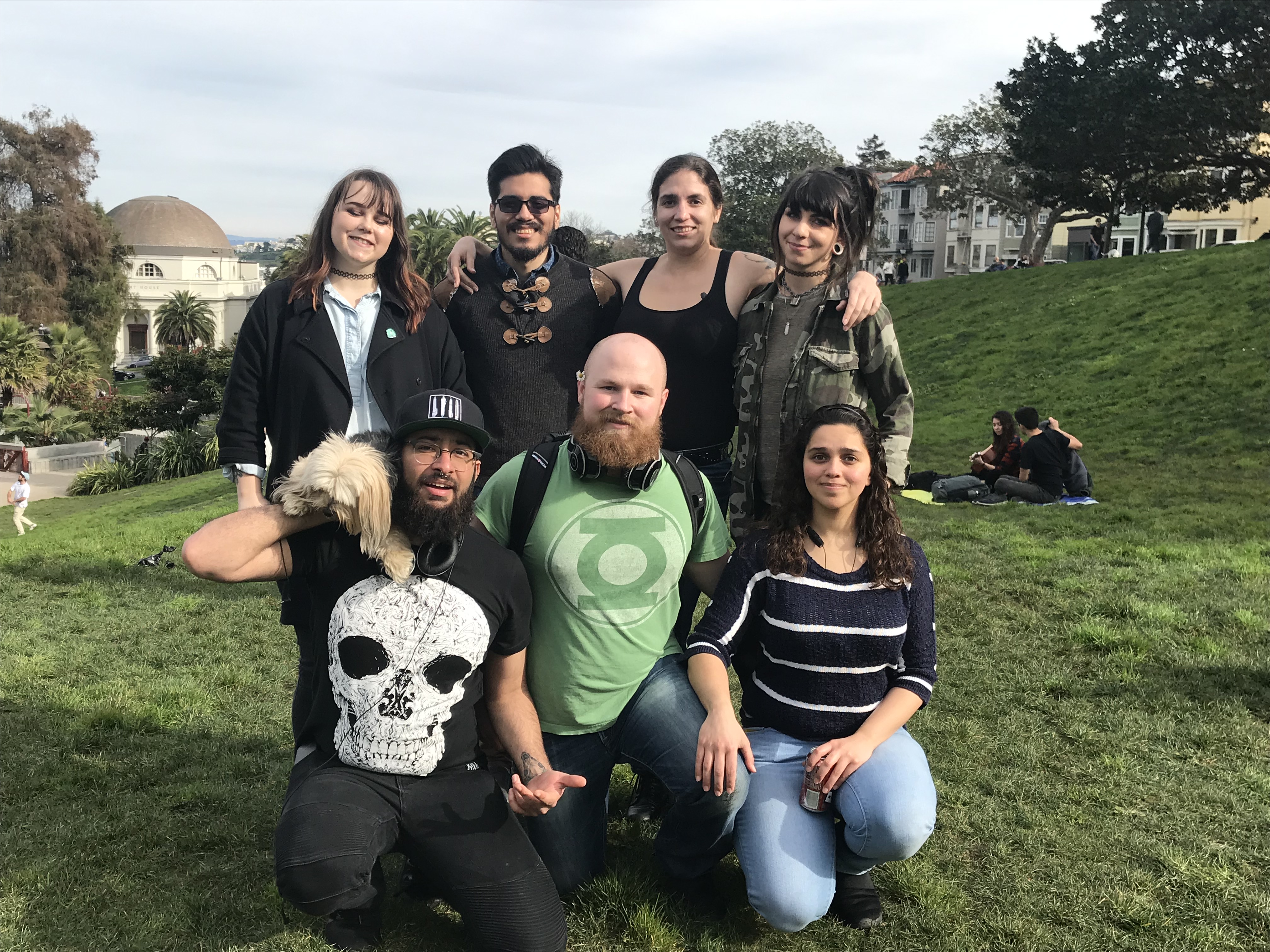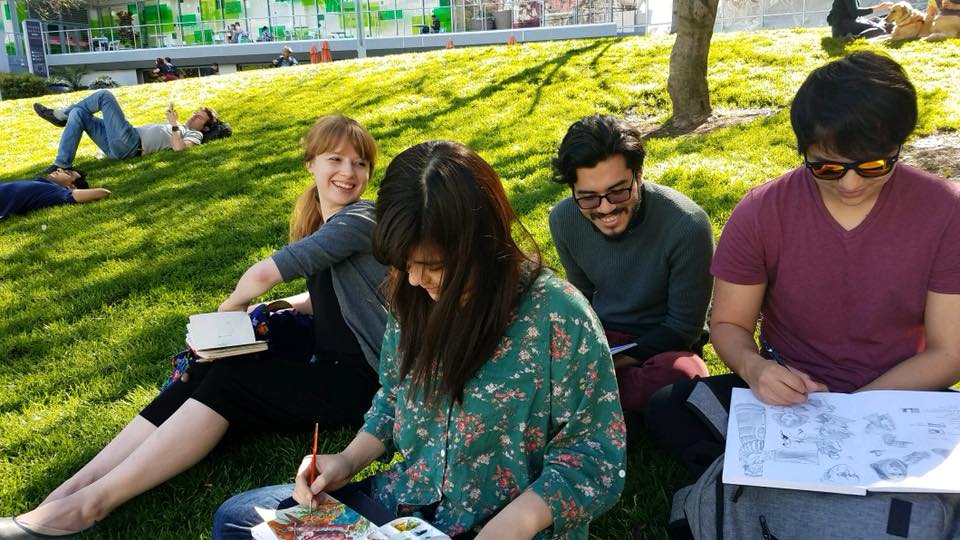Drawaholics Anonymous aims to get students drawing more, improving their skills, and connecting with each other through their shared passion for the craft
By Nina Tabios
Craig Kimball worked as a tattoo artist for over 15 years, but nowadays, he’s tattooing less on people and doing more drawing of them. Kimball wants to create his own comic books and while shopping around for art schools, he came across a video of Academy of Art University’s Drawaholics Anonymous and was instantly hooked.
“Just the first 10 minutes [of the video] was captivating, how they talked about getting better and committing to doing the work,” recalled Kimball, an online Academy student from Ontario, Canada. “That was just the nail in the coffin that did it. I knew I wanted to be a part of this group.”

Butters Alkaabi from the School of Game Development works on his head sketches for his 2,500 Drawaholics challenge. Photo courtesy of Michael Buffington.
Drawaholics Anonymous is a drawing community whose goal is simply to get students to draw more and “create a culture of excellence,” per Michael Buffington, Drawaholics founder and School of Game Development (GAM) concept art lead. To date, the group number has ballooned to around 300, with over 25 people completing the hefty Drawaholics challenge (to become a permanent member, students must draw 1,000 heads, 500 legs, 500 arms, 250 hands, and 250 feet). In addition to the challenge, Drawaholics organizes sketch crawls, sketch challenges, member meet-ups, and guest speakers.
“It’s become this monster,” Buffington laughed. “I thought Drawaholics would change the attitude, the culture, and build camaraderie among students. All of those things happened far beyond what I thought would happen. Now, there’s this level of intensity and love people have for drawing.”
“Every workshop, every meeting, there is someone with work to critique. Seeing that for yourself every meeting is pretty motivating,” said Shermond Wong, who was the second Drawaholics member to complete the 2,500 drawing challenge. “It’s kind of a friendly competition thing.”
Before Drawaholics, Wong said his drawings were “horrible.”
“It was just a mess. I couldn’t see any of the planes of the face, I didn’t know what line work was, I didn’t know what line quality meant,” the M.F.A. GAM student said.
But with Buffington’s influence, Wong was motivated and committed to taking down the challenge as quickly as possible. He holds the second fastest completion time at three months (according to Buffington, the first place record is 11 weeks) and his improvement is evident in the refinement and expression in his final drawings, which are hanging in the Drawaholics Hall of Improvement.

The Drawaholics Hall of Improvement compares members’ drawings from the beginning and end of their 2,500 drawing challenge. Photo courtesy of Michael Buffington.
“My analyzation got better. I got a lot of tips and advice on how to self-critique my own work,” Wong said. “Looking back on the challenge, it was a small step for a bigger leap.”
Richelle Cowan was the first online student to complete the Drawaholics challenge. Located in Colorado, the School of Illustration student said she specifically enrolled in the Academy to learn how to draw and beef up her skills to immediately enter the professional industry for drafting. Already obsessed with improving and committed to helping others progress, she was a natural fit for Drawaholics.
“Drawaholics really gives a base to people that are doing the same thing you’re doing at school. It provides a support group you can go into,” Cowan said. “Every time you engage, online or on-site, you come out a little better and that’s our goal every time.”
To Cowan, Drawaholics is equally about community. A huge advocate for the Academy’s online student community, Cowan led the Drawaholics sketch session at the 2018 Summer Expo, which, coincidentally, was the seminar Kimball was struck by. Now a Drawaholics leader, Cowan is the point person ensuring that Drawaholics’ online members, like Kimball, feel involved, engaged, and most of all, committed to growth.

Drawaholics lead Richelle Cowan (top row, second from right) visited San Francisco to hang and draw with her Drawaholics community. Photo courtesy of Michael Buffington.
“[As online students], we need tactile experiences, we need people on the other end of the screen that we can connect to and talk with,” Cowan said.
Kimball has completed around 1,500 drawings in his Drawaholics challenge, which from a tattoo artist’s perspective is “light work.” “Tattoo artists have to draw 5,000 roses as an apprentice, but the human body is more challenging,” explained Kimball, who wants to do more than the required 2,500 drawings.
“It’s not just about talent, it’s about the work you put in. If you work hard, you’re going to get it,” said Kimball, who is quick to attribute his 96 percent final foundations grade to his newfound community of artists. “Nothing has made me feel more a part of the school than this extracurricular group. They taught me attention to detail and just putting in the work. I wouldn’t have gotten that without being a member of the Drawaholics.”
